Xu Bing’s Masterpieces at the Frost Museum
Anthony Japour offers a perspective on Chinese Contemporary Art
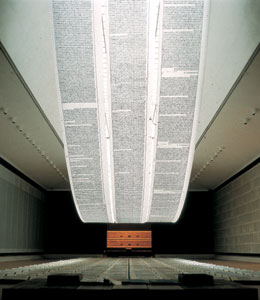

Anthony Japour (AJ) is an art collector, advisor, independent curator, and private art dealer. Japour deals in the international contemporary art movement with a focus on the Chinese Contemporary Art Movement and its relationship to the pillars of Western Contemporary Art. Since 2003, AJ has produced numerous art exhibitions and installations in Miami and South Florida through AJ Japour Gallery and now works on various art projects. AJ has served on the Fine Arts Board and the Cultural Arts Council of the City of Miami Beach.
Xu Bing: Writing Between Heaven and Earth
Frost Musuem, Florida International University
February 21, 2015- May 24, 2015
Some years ago during Art Basel Miami Beach, I hosted a Symposium on the Chinese Contemporary Art Movement at the Center for Visual Communication sponsored, in part, by Art & Antiques Magazine. In attendance were art collectors, art dealers, curators, and as well as experts and specialists from Christies, Sotheby’s and Bonhams auction houses. It was a lively series of talks and I provocatively posed a question to the experts: Which Chinese Contemporary artist’s works would still be talked about in the 22nd Century?

While the more familiar names we often see in the headlines with auction records such as Zeng Fanzhi, Yue Minjun, and Zhang Xiaogang were mentioned (notably, no one mentioned Ai Wei Wei— of course that was before he got into trouble with the Chinese law). I said: the artist “Xu Bing” who is on view now at the Frost Museum in a show entitled Xu Bing: Writing Between Heaven and Earth curated by Professor Lidu Yi at Florida International University.
Xu Bing was born in Chongqing and grew up in Beijing where he attended the most important art school in China, Central Academy of Fine Arts and where he later in life became its Vice-President. Xu Bing’s work is most well known for his printmaking skills and the most important work to date is Book from the Sky now on view at the Frost Museum. From a conceptual point of view, Xu Bing’s artistic works are about language drawing from his own cultural heritage and evolved and developed through living in the United States in the 1990’s.
While Xu Bing’s work is distinctly apolitical and Book from the Sky was created in 1987 prior to the Tianamen Square Protests in 1989, the work was reinterpreted and criticized by some quarters within Chinese society after the protests as being anti-government. The work itself is inspired by traditional Chinese characters and while its 1200+ characters look real, it’s complete gibberish— without any meaning at all.
Xu Bing’s conceptual use of language continued to evolve with his innovative Square Word Calligraphy where the artist reinterprets important Western and Chinese poets’ works into artwork in what appears to be Chinese calligraphy but what is, in fact, English written to look like Chinese characters. Included in this body of work is even a poem written by Mao Zedong which according to the artist reflects the conflicting legacy of Mao Zedong.
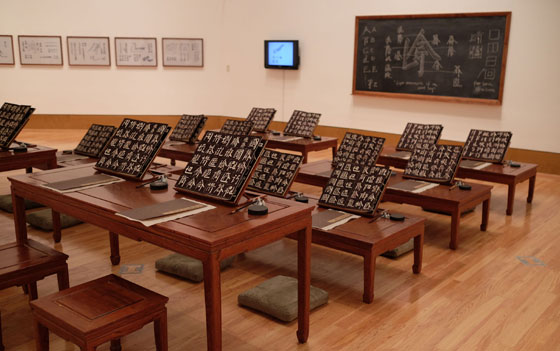
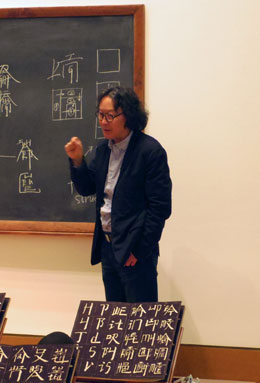
The artist’s most innovative work to date was first shown at a 2007 exhibition I saw at the Museum of Modern Art in New York City and shown here at the Frost Museum, entitled Book From the Ground, 2007; it consists of two computers separated by a Plexiglas panel with text on Mylar which uses visual language the artist created from symbols he saw around the world including airports, restaurants, and street signs. The communication between the two computers represents the relationship between two people today occurring via email, texting and other means of communication. The hard-copy version of this work which is completely pictorial with the use of Xu Bing’s made up language is an account of one young man’s life over a 24 hour period; all available copies at the Frost Museum’s opening exhibition were completely sold out which followed a completely full lecture presented by the artist at the Florida International University.
At a lunch I hosted for the artist the next day at the Perez Museum, Xu Bing asked me why I had developed such a keen interest in Chinese Contemporary Art. I said because “when I first became acquainted with the Chinese Contemporary Art Movement, I realized immediately that I was looking at the Picasso’s and Miro’s of my time.”
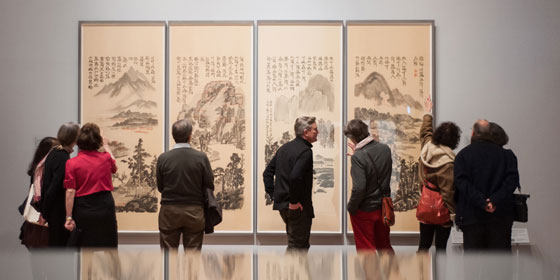
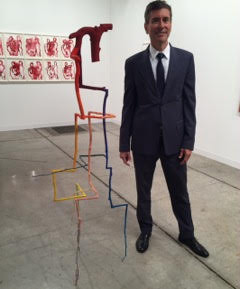
Anthony Japour is an art collector and art advisor. Japour lectures on the Chinese Contemporary Art Movement and its relationship to the pillars of Western Contemporary Art. For over a decade [2002-2012], Japour mounted numerous art exhibitions and installations in Miami Beach and South Florida through AJ Japour Gallery and linked these exhibitions to charity events at his home in South Beach devoted to the health, education and welfare of children. Japour has served on the Fine Arts Board and the Cultural Arts Council of the City of Miami Beach. Japour has been a contributor writing on contemporary art for SocialMiami.com since 2010.


